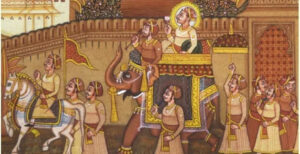Ethiopia Country History: Culture and Heritage – Ethiopia, a land of diverse landscapes and a history that spans millennia, is a country like no other. From its ancient civilizations to its more recent struggles and triumphs, the history of Ethiopia is a fascinating journey through time. In this article, we will delve deep into the historical tapestry of Ethiopia, exploring its rich culture, heritage, and pivotal moments that have shaped the nation.
Ethiopia Country History: Culture and Heritage / Ethiopia Country History: Culture and Heritage
Ancient Beginnings
The Cradle of Humanity
Ethiopia’s history can be traced back to the dawn of humanity itself. It is often referred to as the “Cradle of Humanity” due to the discovery of some of the oldest hominid fossils in the world. The famous Lucy, a 3.2-million-year-old hominid, was discovered in Ethiopia, providing invaluable insights into our evolutionary past.
The Aksumite Empire
One of Ethiopia’s earliest recorded civilizations was the Aksumite Empire, which thrived from the 1st to the 7th century AD. Renowned for its advanced architecture and trading prowess, Aksum was a significant player in the ancient world. It’s also believed to be one of the first Christian kingdoms, adopting Christianity in the 4th century AD.
Medieval Ethiopia
The Zagwe Dynasty
The Zagwe Dynasty, which ruled from the 12th to the 13th century, marked another significant era in Ethiopian history. They are known for their construction of iconic rock-hewn churches in Lalibela, a UNESCO World Heritage Site and a testament to their architectural prowess.
The Solomonic Dynasty
The Solomonic Dynasty, which claimed lineage from the biblical King Solomon and the Queen of Sheba, came to power in the 13th century. This dynasty played a pivotal role in shaping Ethiopia’s identity, culture, and religion. The Ethiopian Orthodox Tewahedo Church, a cornerstone of Ethiopian culture, flourished during this time.
Colonialism and Independence
The Scramble for Africa
Ethiopia, unlike many African nations, was never fully colonized during the “Scramble for Africa” in the late 19th century. This is due to the fierce resistance led by Emperor Menelik II, who successfully defeated Italian forces at the Battle of Adwa in 1896. Ethiopia’s independence was preserved, making it a symbol of African resistance against European colonization.
Modern Ethiopia
Haile Selassie and the Italian Occupation
In the early 20th century, Ethiopia faced the threat of Italian invasion once again. Haile Selassie, the Emperor of Ethiopia, became a symbol of resistance during the Second Italo-Ethiopian War (1935-1936). Although Ethiopia was briefly occupied by Italy, Haile Selassie’s appeal to the League of Nations led to its liberation in 1941.
The Derg Regime
The latter half of the 20th century saw Ethiopia grapple with political instability, culminating in the rise of the Derg regime led by Mengistu Haile Mariam. This period was marked by human rights abuses and famine, most notably the devastating Ethiopian famine of 1983-1985, which drew international attention.
The Ethiopian People’s Revolutionary Democratic Front (EPRDF)
The EPRDF, a coalition of rebel groups, toppled the Derg regime in 1991. This marked a turning point in Ethiopian history, leading to a new era of governance and reforms. Ethiopia transitioned into a federal democratic state, with Addis Ababa as its capital.
Conclusion
Ethiopia’s history is a vibrant tapestry that weaves together ancient civilizations, dynasties, resistance against colonialism, and modern transformations. Its cultural heritage, religious diversity, and iconic landmarks make it a unique and intriguing country. As Ethiopia continues to evolve, its rich history remains an essential part of its identity.
FAQs
- What is Ethiopia’s most famous historical site?
- Ethiopia’s most famous historical site is the rock-hewn churches of Lalibela, a UNESCO World Heritage Site known for its remarkable architecture.
- Who was Emperor Haile Selassie?
- Emperor Haile Selassie was a prominent Ethiopian leader who played a crucial role in resisting Italian occupation and maintaining Ethiopia’s independence.
- What is the significance of the Battle of Adwa?
- The Battle of Adwa in 1896 was a pivotal moment in Ethiopian history as it resulted in the defeat of Italian forces and the preservation of Ethiopian independence.
- When did Ethiopia officially adopt Christianity?
- Ethiopia officially adopted Christianity in the 4th century AD, making it one of the world’s earliest Christian kingdoms.
- What was the Derg regime, and why is it significant in Ethiopian history?



